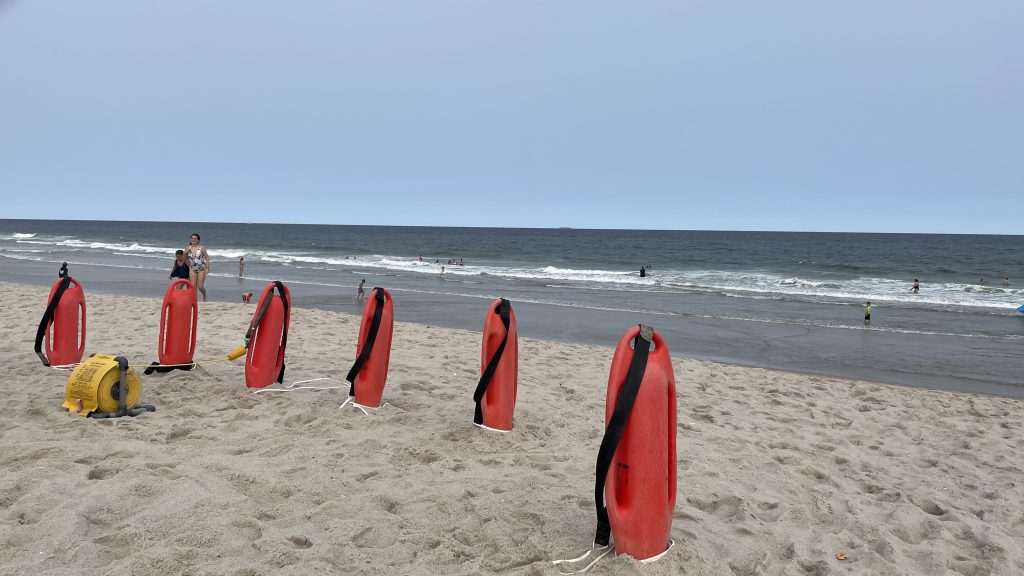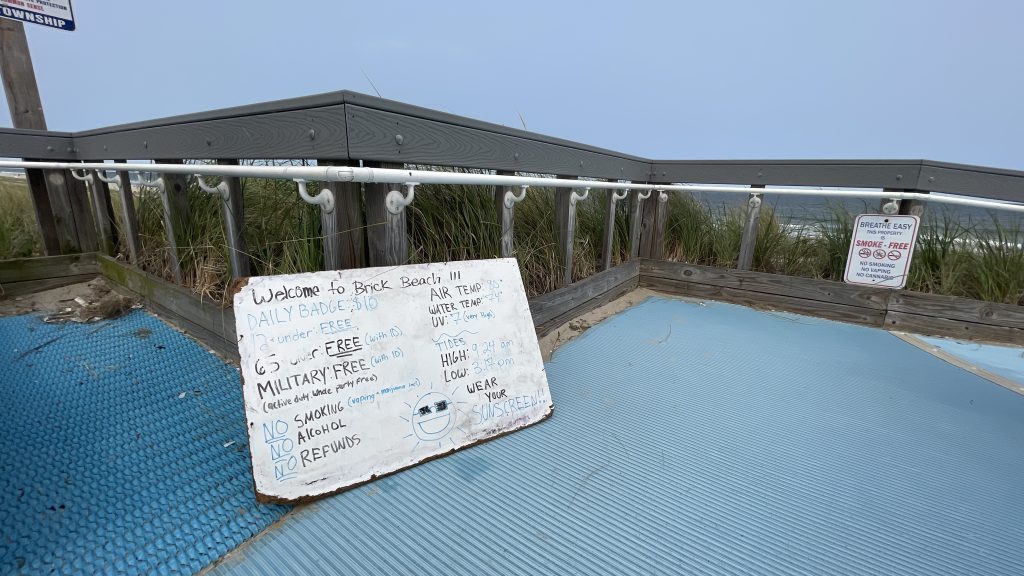It’s a perfect summer day – not just mild with low humidity, but light winds and calm seas – but the flags flying over your local ocean beaches are yellow, not green.
Is there something afoot? A rip current? A tropical system on its way? Not so, officials say. Instead, the use of flags to indicate water safety have changed with the times, and local communities in Ocean and Monmouth counties have been among the first to adopt new standards set forth by the United States Lifeguard Association, an organization that certifies and accredits lifeguard squads across the country.
“The change actually took place during the summer,” explained Rob Brown, deputy Chief Lifeguard for Brick Township, during an online chat with Mayor Lisa Crate. “We started the summer, for a couple weekends, using green flags, and then the United States Lifeguard Association … came out with new guidelines just in early-to-mid June.”
Crate said it was one of the first things she and her family noticed when they went to the beach this season.
“I noticed this year when we went, there wasn’t ever really a green flag,” she said. “It used to be green, yellow or red, and we could kind of figure out how the waves were today.”
Green flags, Brown said, “signify the water is safe to swim, and in the ocean, the water is never truly safe to swim.”
The lifeguarding association suggested several alternatives and, Brown explained, the chiefs of squads in Ocean and Monmouth counties met together to agree upon a new system that would implement the advice they received uniformly from beach-to-beach.
“All of the chiefs got together and decided to add a tiered system,” he said.
Yellow and Red Only?
While green flags have been shown to instill in swimmers a false sense of security, there is also the possibility that yellow flags could lead some beachgoers to believe there is a specific danger on a given day. That potential led to a tiered system, which is explained by signs at beach entrances.
Beachgoers, at the entrance point, will find a yellow flag, a “double yellow” flag, a red flag and a “double red” flag. Each have their own meaning.
“You’re going to see a yellow flag most days, and the days when you used to see a ‘normal’ yellow flag, you’ll see two flags,” Brown said.
A single yellow flag advises swimmers to exercise general caution: “You can swim in the water with no restrictions [beyond normal beach rules], you can use boogie boards, free-swim where you’d like,” he said.
A double-yellow flag indicates that swimming is allowed, but with some sort of restriction due to rough seas or a change in the ocean environment that day that makes a particular activity more hazardous than usual.
“For example, we might remove boogie boards, we might keep you waist-deep in the water or limit where you can swim if there’s a rip current,” said Brown.
A single red flag indicates rough water, but not a total closure of the beach. Swimmers will usually be allowed to go to the water’s edge, ankle deep and splash some water to get cool, but not enter for normal swimming.
A “double red” means conditions are so poor that guards may not be on duty and swimming is not allowed. This may occur when there is an active storm or very rough surf. Sometimes, in these conditions, guards are still on-duty, but only to ensure no one enters the water. This usually occurs during the onset of a tropical system, when the weather may be sunny, but the ocean is extremely dangerous.
“If there’s a tropical storm coming up, say 12 to 14 foot waves, there would be double red flags and you would not be able to pass our lifeguard stands,” Brown said.
Extra Protection
In addition to the tiered flag system, most local communities – especially in northern Ocean County – have adopted lightning detection systems following the tragic death of a South Seaside Park lifeguard in 2021 due to a lightning strike. There are two such systems on the market – one type is used in Brick Township and the other is used in Toms River Township and Lavallette that are networked together. Seaside Park has also installed the system this season.
“Our system will detect any cloud-to-ground lightning through the flash itself, as well as the ions that releases, and it’s specifically pointed to our location at the beach,” said Brown. “It’s not pointed back to a station in Manchester or Tinton Falls, where a lot of the weather stations are located.”
Smartphone apps with lightning alerts generally use ionic data from weather stations that detect “cloud to cloud” lightning, but the live detection systems at the beaches utilize optical sensors to detect cloud-to-ground strikes from as far as 20 miles away. At 10 miles, an alert tone sounds and a strobe light flashes, signaling swimmers to exit the water. Guards must wait 30 minutes from the last alert before allowing swimmers to re-enter. Another alarm sounds when lightning strikes are detected from 5 miles away.
Brown said guards have also been aided by a factor less commonly realized by most visitors – the color of bathing suits worn by swimmers.
“Those flourescent bathing suits, the yellows and oranges, something that is easily visible both in and out of the water – something that can catch your eye really quickly and reflect easily in the water – is better than a typical blue bathing suit,” he said. “Those colors get muted out in the ocean really quick.”
The full interview between Crate and Brown can be found in the video embedded below, or at this link.
Brown also speaks about child water safety, junior lifeguarding programs, and similar topics.

Advertisement

Seaside Heights & Seaside Park
Seaside Heights School Board Seeking More Participation, Will Change Meeting Times

Police, Fire & Courts
Seaside Park Man, 68, Charged in Fatal Crash With Pedestrian

Ortley Beach & North Beaches
Lottery Ticket Worth $10K Sold at Ortley Beach Acme

Ortley Beach & North Beaches
Abandoned Private Island ‘Mansion’ in Barnegat Bay Poised for Demolition











